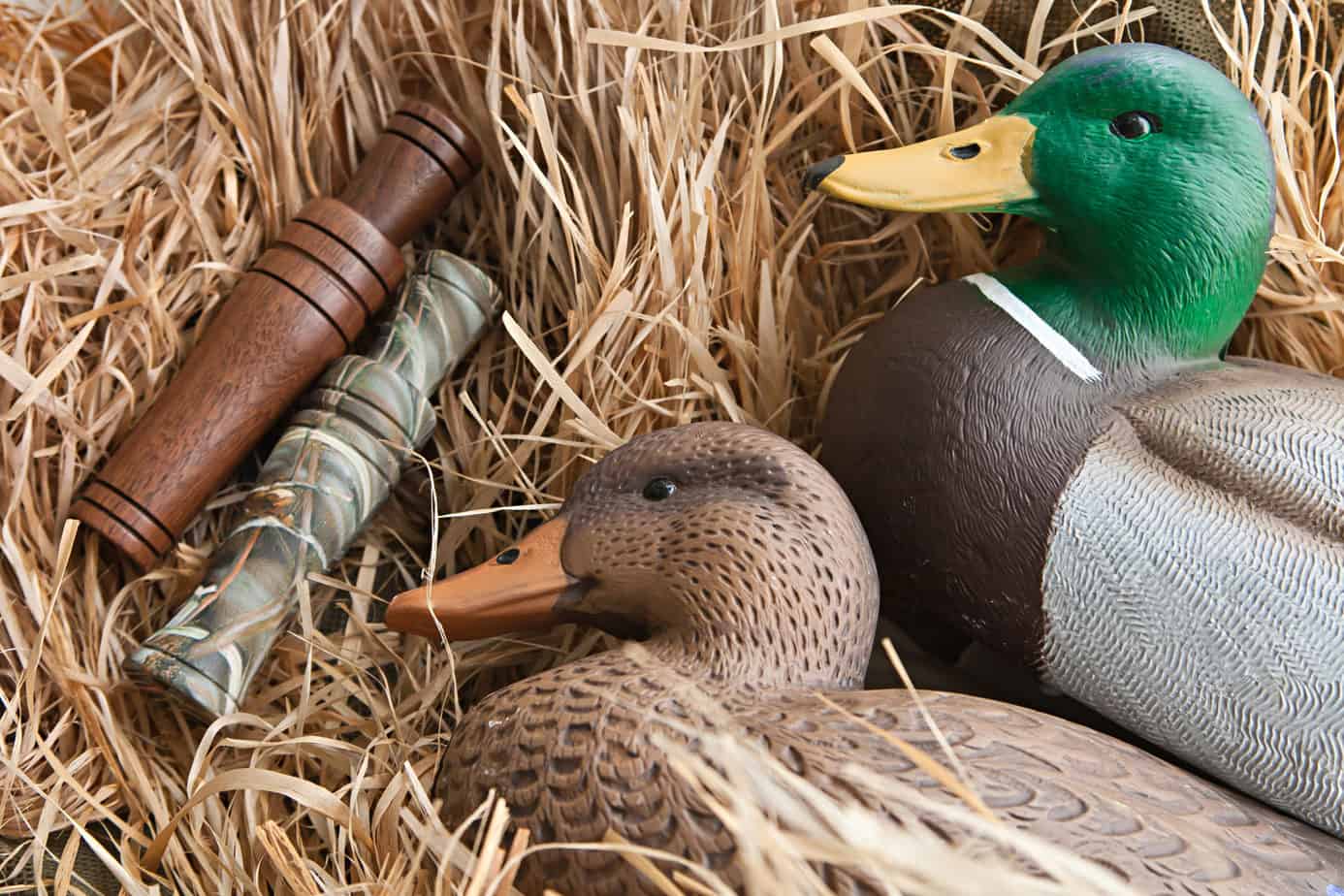Hunting offers many different strategies to make sure you’re able to fill your tag and your freezer every season.
Given that human beings have been hunting for thousands of years, some things have been utilized and improved upon for generations. A perfect example of this evolution is the decoy.
Decoys are objects that are created to mimic the appearance of a game animal with the intention of drawing live game closer and present an opportunity to harvest the animal. These come in many different varieties and can be used in several ways, giving hunters a plethora of options.
Let’s discuss the advantages of decoys, as well as the different options they present.
Why Decoys?
While it is not always necessary to hunt with decoys to be productive, having decoys at your disposal can give the hunter many advantages.
Although game calls are designed to draw your target in to you, an animal is going to start to survey the scenery with their eyes to locate what they perceive as the source of the call.
If an animal is drawn in but does not see anything, it may become very nervous or suspicious of the situation, especially if the area you are hunting has had significant pressure from other hunters.
This is where the beauty of the decoy comes in. A strategically placed decoy spread can be the difference between getting a shot at the hot gobbler or flock of mallards.
I cannot tell you how many times I’ve called in a boss tom turkey, only to have him strut around the edge of the field at 75 yards because he could not locate the hen that he thought he was hearing.
Having a decoy could have ensured he would come right to me on a rope. That is a regret I still carry to this day.
It is important to remember that decoying is subject to your area’s hunting rules and regulations. It is even illegal to use decoys or bait in the pursuit of certain types of game, so due diligence is very important when preparing for a hunt and considering the use of decoys.
The last thing anyone wants is to harvest an animal, only to be penalized because it was done illegally. Therefore, one can never be too prepared.
That being said, let’s examine some of the different types of decoys and how they’re used.
Waterfowl Decoys
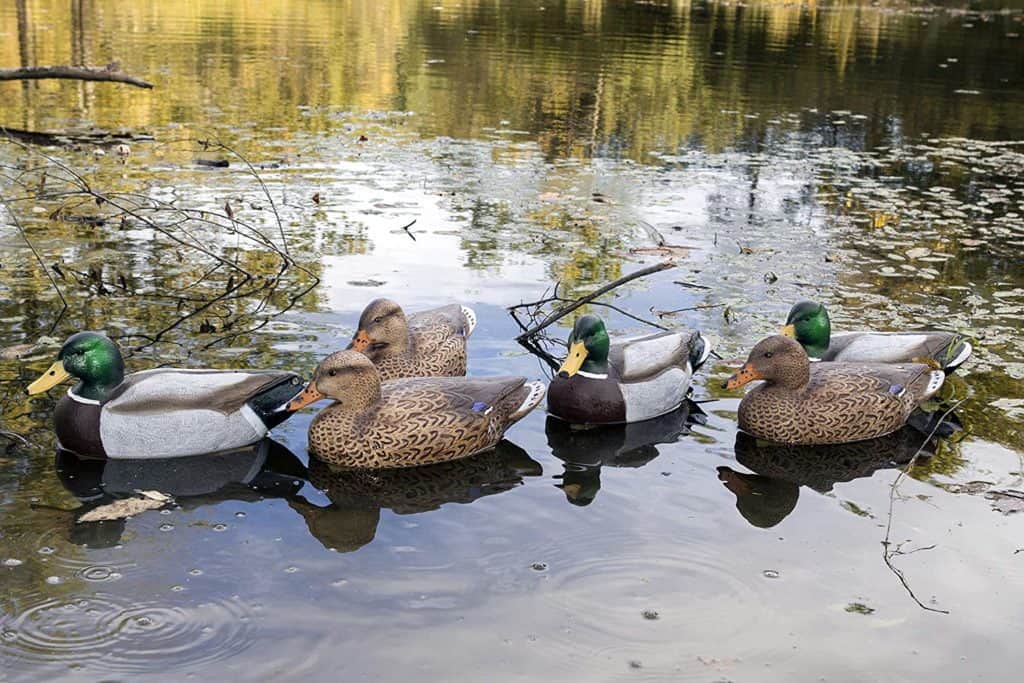
Few things are as classic and iconic as the waterfowl decoy. In fact, duck decoys are so cherished as to have become very popular collector’s items amongst hunters and other enthusiasts.
When waterfowl hunters utilize duck decoys, they generally do so in spreads of six or more. This “spread” of decoys are designed to float in shallow water.
They are generally made to look very realistic, as opposed to the crude decoys of centuries passed. Modern decoys are usually made of plastic but can also be made of wood. Some are even inflatable.
Most decoys are designed to be able to be pushed along the surface of the water by the wind, giving the appearance of an actively swimming flock of ducks.
In recent years, duck decoys have gotten more sophisticated, some even possessing electrically powered wings that mimic a hovering duck that is about to land.
Geese populations have exploded across North American within the last century, giving goose hunters an opportunity to perfect the craft of decoying for geese. The explosion has given a great incentive for the goose hunting industry to get very creative with their craft.
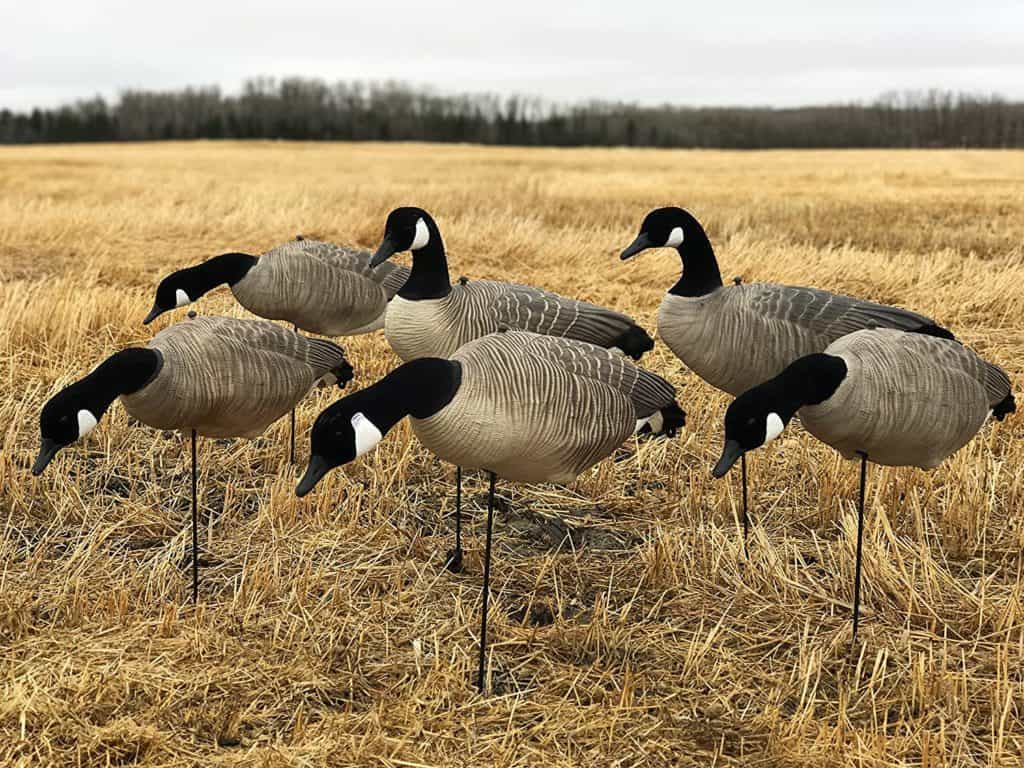
Consequently, goose decoys range from anything from simple silhouettes to solid plastic to shell decoys made of plastic. This assortment gives goose hunters plenty of options, as several decoys are usually involved in a single decoy spread.
Furthermore, recent developments by decoy manufacturers have seen positive effects from things that may seem ridiculous, such as creating decoys that are much larger than real life geese – but prove to be more effective than life-size decoys.
This plethora of options allows hunters to experiment and find the perfect setup for their strategic goals.
Dove Decoys
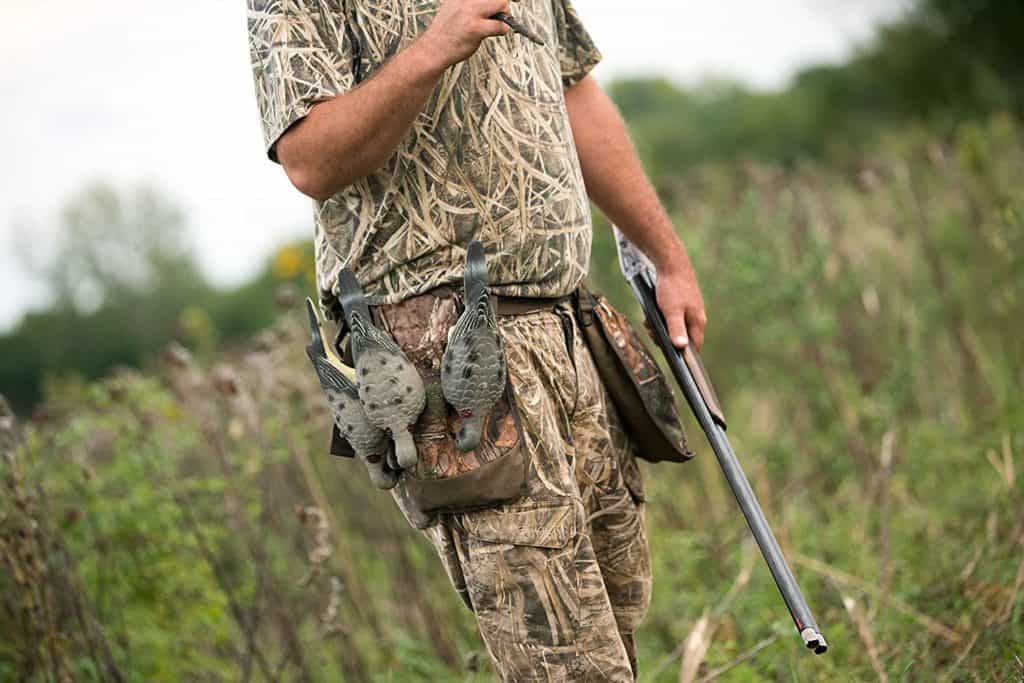
As summer winds to a close, dove hunters begin salivating for early September. Given the immense popularity of dove hunting, decoys are a popular tactic for this crowd of wing-shooters.
Yet, the advantage of hunting doves with decoys is that there is much less to think about than waterfowl hunting, for instance. It does not take a whole lot to coax a dove into shotgun range.
Options on dove decoys are far more limited, mostly consisting of molded, solid plastic decoys. Often, you can find them in small packs of three or more, and many contain a string to be able to hang the decoy.
Since dove tend to travel in pairs, it is a good idea to get creative! Place a pair on a limb in a fencerow, or spread a few out on the ground at the edge of the grain field about 20 or 30 yards from your post and keep an eye out for passing doves who notice your spread.
Be ready, as these doves will flash past faster than you can think. The use of dove decoys in this way will greatly improve your chances of bringing down a few of the little gray rockets.
Turkey Decoys
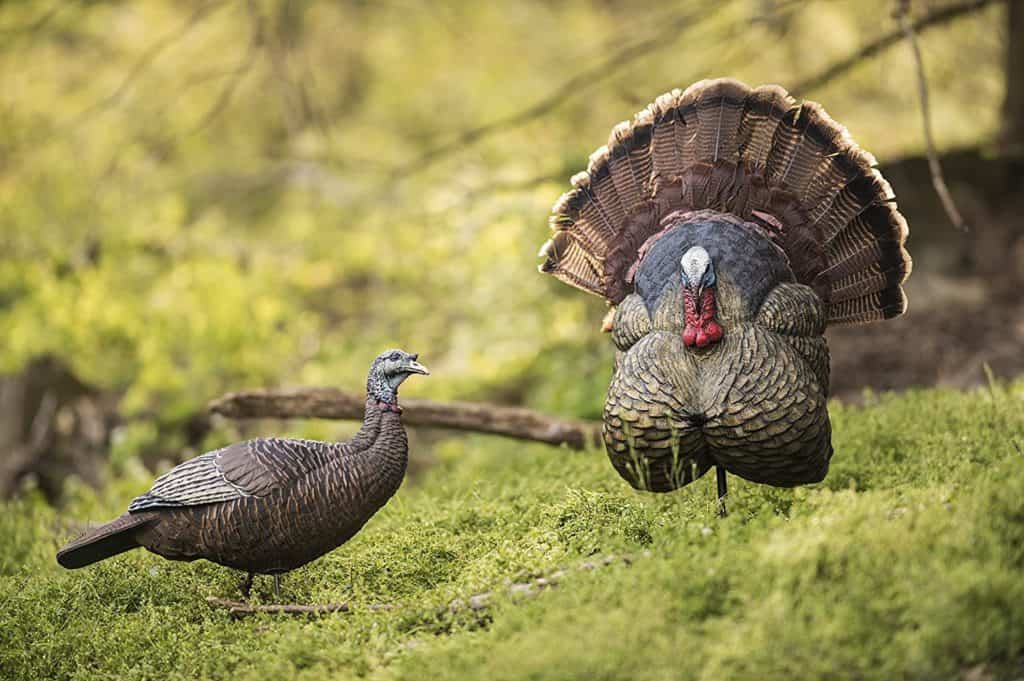
Turkey decoys are to turkey hunting what goal-posts are to football. While they aren’t completely necessary to play the game, one would sometimes wonder why a hunter would choose not to utilize them.
Yet, turkey hunting with decoys is unique in and of itself. Unlike the “spread” philosophy found in waterfowl and dove hunting, turkey decoys usually don’t involve more than two or three.
It is most common to find them set up between 20 and 30 yards from a blind, usually within a clear shooting lane. Decoys can either be hens or toms, but the most popular setup is a tandem of a hen and a young tom known as a “jake.”
This mini-spread gives the appearance of a subordinate tom encroaching on a hen, which has a tendency to drive mature toms a little crazy.
Like waterfowl decoys, turkey decoys have seen their share of improvements through time. Even within the past few decades, turkey decoys have gone from crude, Styrofoam silhouettes on stakes, to very detailed and realistic.
For instance, some modern hen decoys are made to even appear to be nesting. Tom and jake decoys are outfitted to be able to place a real tail-fan on them, giving a very realistic appearance that may fool even a hunter if they did not already know they were decoys.
Strutter decoys are especially effective when placed with hens, as this will sometimes get that call-shy gobbler to get just offended enough to come in for a shot.
Conclusion
Decoys might be said to be as much a part of hunting as a bow and arrow, a dog, or a rifle. An experienced hunter should at least be acquainted with them if he or she wants their chances of a harvest improved.
Decoy knowledge is simply an investment, one that will pay off big dividends in terms of putting meat in the freezer for years to come.

